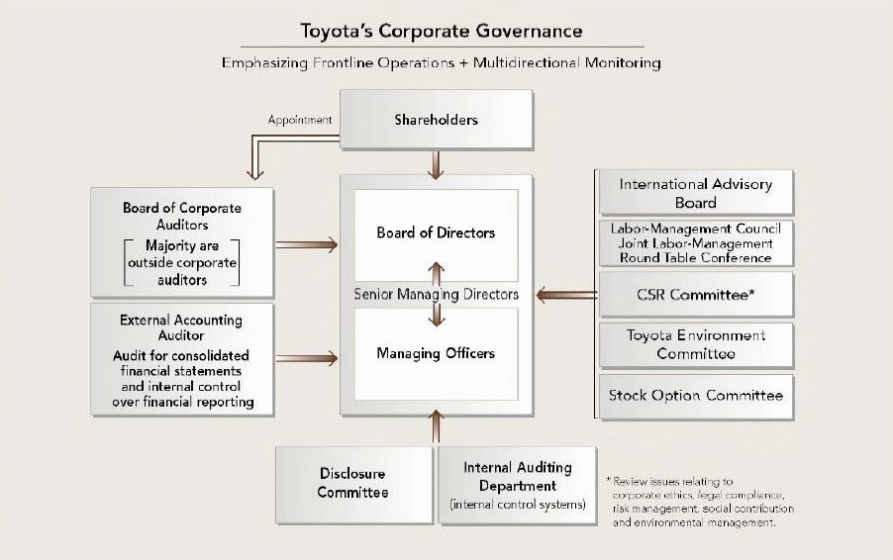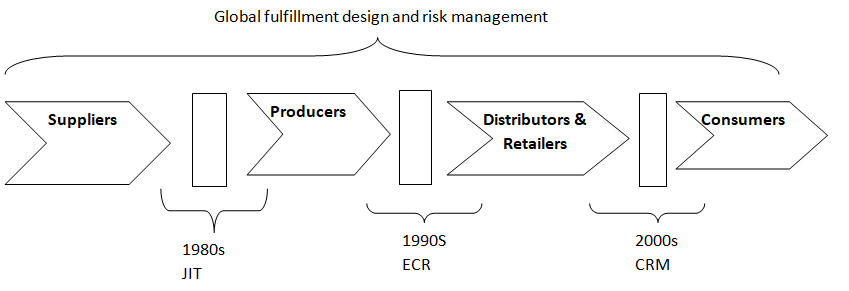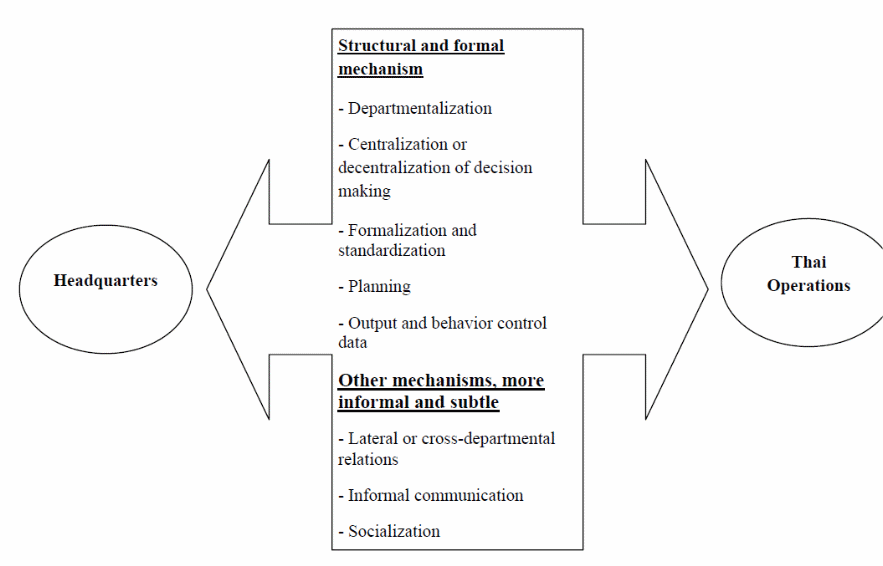Introduction
In the early 80s service became an integral and very significant aspect of operation management. Service movement was motivated by high number of students who were involved in non-manufacturing activities. During this period, there were disillusion in the existing contents in operation management by both the college students and the economic experts.
There were a number of subjects taught in high academic institutions such as consignment quantities, line balancing and stock regulation which had little connection to the challenges facing executives managing service operations. This does not mean that these subjects had no value, but consumer service, quality of service and design were main challenges that were facing the operation managers during that time and there were no instruments or techniques to assist the management to counter such challenges (Kleinndorfer et al. 482; Johnson 104).
High demand for service oriented strategies in operation management was timely. This blended well with the emerging realization of the significance of the consumer and enhanced consumer geared view of operations. This marked the beginning of the shift from the efficiency –oriented operation management. This matched with the rising strategic trend in operation management. Service operation emphasize not only in making operation management more subject oriented, but also assisted in developing strategic advantage (Choon 3).
Since 80s, service operations have had great appeal globally in diverse functional areas. Service operations are characterized by a number of stages: First is the understanding of the diversity between products and services, second is the development of theoretical model and third is the pragmatic testing of these models. The fourth stage is concerned with application of instruments and models to enhance service management. Service movement has increasingly grown due to overlap between the issues of operations, marketing and human resource management (Johnson 104).
Analysis of Toyota Motor Corporation
Toyota motor company is the number one auto manufacture in the planet. Its market stretches to over 170 countries and regions globally. Toyota’s principal markets are USA, Europe, Japan and Asia. The company’s headquarter is in Toyota city, Japan and employs approximately 300,000 workers. Toyota manufactures and sells automobiles ranging from passengers cars, sports and recreational vehicles to huge trucks.

Toyota’s subsidiary company, Daihatsu Motor Company manufactures and sells medium sized vehicles and compressed cars. Hino Motors manufactures and sells commercial automobiles. Toyota also produces motor vehicle spare parts and accessories for sale and for own use (Liker and Hoseus 4).
Toyota operates through three divisions and these are automotive, financial services, and other businesses. Toyota’s automotives are further divided into normal engine vehicles and hybrid vehicles. The company’s product line up includes semi-compact and compact cars, medium sized vehicles, trucks, buses and minivans. Toyota’s Automobile products brands include Corolla, Avensis and Camry.
Toyota also produces Lexus cars but as a separate entity from its brands. In Japan, the company manufactures and sells lavish cars under the brand name century and crown limousines. Toyota hybrid cars include Prius which is produced in large number. Automobile spare parts and accessories are produced by Denso and Toyota. Semi-compact and compact cars include Corolla sedan, which is the company’s best selling brand.
Other semi-compact cars include Yaris which is marketed as Vitz in Japan. Besides cars, minivans and trucks, Toyota also manufactures forklifts, automatic rack systems, tractors, power shovels, material handling equipment among others (Morgan and Jeffry 5-6).
The financial service segment of Toyota mainly deals with financing middlemen and consumers for acquisition and leasing of their automobiles. This segment also provides retail leasing through the acquisition of lease contracts made by its dealers. Finance service division of Toyota include Toyota Finance Corporation and Toyota Motor Credit Corporation mainly based in Japan and other foreign subsidiaries and affiliates offering sales financing for the subsidiaries and affiliate of Toyota company.
Toyota’s other ventures include its operations in telecommunications. The company at the present holds about 12 percent share in KDDI Telecommunication Corporation in Japan. Toyota Company also designs and produces prefabricated real estate and ICT related businesses (Morgan and Jeffry 7).
Toyota operates its own distribution network in Japan. This network consists of over 300 dealers operating in more than 5000 sales and service outlets. Toyota owns 30 of these dealers. Besides, Daihatsu sales distribution network comprise of about 60 dealers and operates 800 outlets. They own 40 of these dealers. Sales of Toyota automobiles in Japan are carried out through four channels. Toyota uses over 170 distributors in 170 countries to market their automobiles in the foreign market (Liker and Hoseus 5).
Toyota’s work practices have focused on the role of employees in solving production challenges. Therefore, they have emphasized a lot in micro-infrastructural elements of operation management such as workforce policies, human resource selection and development, measurement and control systems, and the structure of the organization.
Toyota has transformed its operational superiority into a strategic weapon not only by instruments and quality enhancement techniques but also through entrenched business philosophy. The success of Toyota Company is thus based on its capacity to develop leaders, put together teams, and foster a supportive culture, to design policy, enhance supplier relationship, and to uphold a learning organization (Morgan and Jeffry 7).
Toyota has a matrix service structure. Its structure is modeled is such a way that it promotes teamwork. Service operational structure for Toyota’s subsidiaries are separated into three main categories namely group, division, and departments. These are further divided into seven groups which include management, sales and marketing, production and procurement, manufacturing support, consumer service, quality assurance, technological center (Toyota 3).
Toyota is also accredited to the development and operating Just-in-time (JIT) operational philosophy. This philosophy enhanced Toyota’s competitive advantage in local, regional and global market. This philosophy aimed at producing and delivering raw materials and finished products just in time/promptly. JIT philosophy also focused on eliminating wastefulness and steady increase in productivity.
Toyota applies JIT philosophy in both its manufacturing and service segment. In a nut shell, JIT philosophy ensures production adapts to the consumer needs, maximum respect to company subsidiaries and affiliates, harmonization and balance of production and sells, total visibility of people, materials and processes, constant improvement, and holistic approach to company’s operations (Liker and Hoseus 5).
Toyota has renamed and transformed just-in-time philosophy into Lean product and development system. This system involves planning, development of concepts, designing system levels and details, assessment, processing, fabrication and rump up (Toyota 4).
Lean product and development system is aimed at producing and creating recyclable knowledge and to assist the company is becoming more responsive and no wasteful. This system integrates specialized and skilled personnel, development process, and tools and technology (Morgan and Jeffry 7).
Toyota Company applies both Total Quality Management (TQM) and Just- in-time (JIT) philosophy in the development of new products and management of its supply chains. The company generally incorporates JIT between suppliers and production division, then optimized logistics between the production units and the distributors, then to Consumer Relationship management (CRM), and lastly to universal fulfillment design and risk management (Figure 2) (Liker and Hoseus 6).

Toyota’s Service Blue Print
Toyota Motor Corporation established global strategies and targets for its subsidiaries and affiliate companies. Toyota’s goals are to maintain its number one position in the global automotive industry, uphold steady growth and enhance its revenue and returns to shareholder.
To accomplish these goals, the company has put a lot of effort in technology, production, cost competitive, professional training, and marketing by controlling quality of its products. Toyota regards technology as the main driver of success. Technology in conjunction with environmental concerns, Toyota continues expanding and enhancing exceptional technologies which are ecologically friendly.
In the global stage, long term goals of Toyota are sustainable research and development, manufacturing and corporate social responsibility to attain sustainable development as well as environmental protection (Morgan and Jeffry 7).
Another strategy used by Toyota is localization of the global markets and targeted strategies for regional markets. Toyota regards localization of businesses as a significant factor for growth and believes that globalization can only be achieved by fulfilling specific needs of different segments in the global market.
Toyota achieved globalization through designing automobile products that best suite the local markets in which they are sold. Locally designed products have enabled Toyota to meet needs of the local customers and take necessary steps to adjust to market dynamics. Localization of the markets have also helped Toyota Corporation to offset challenges facing global markets such as fluctuation in exchange rates, trade restrictions, among others.
In summary, Toyota produces exceptional products to offer full product line up to take advantage of the opportunities available in different global market segments. This strategy ensures full utilization of local engineers and manufacturers as well as distribution channels (Choon 2; Morgan and Jeffry 7).
To strengthen its global localized subsidiaries, Toyota established global production centers whose main purpose is to act as training centre for its global human resource. Toyota has employed people all over the world with diverse culture and social background. In order to manage its global operations and diverse human capital successfully, human resource development is very important.
Global production center was first established in Motomachi in Japan and was aimed at equipping the employees with necessary skills to carry out their duties more effectively and efficiently. In addition, Toyota Institute was set up in 2001 to train would-be managers or executive aspirants in implementing Toyota way when carrying out their duties. The objective of Toyota way is to enable employees of the company found in different parts of the globe to share similar values and cultures (Liker and Hoseus 9).
Besides Toyota way, Toyota’s code of conduct is another tool used by the corporation to achieve its goals. Toyota’s code of was introduced in 1998 and amended in 2006 and has been utilized by the corporation to guide their staff globally when carrying out its operations. Initially, this code of conduct was used to shape up employees state of mind and focused on values that employees had to adhere to.
However, the revised version comprises of declarations from employees instead of commands from the corporation. The code of conduct is distributed among the management of local, regional and foreign subsidiaries to develop universal awareness (Morgan and Jeffry 8). On the other hand, Toyota way was established in 2001 to abridge the values and techniques that employees had to perform to embark on the guiding principles in all the company activities.
Toyota way is presently working as the principle standard of Toyota Corporation globally and also as the philosophy of the executives focusing on long term sustainable advantages. The two basic pillars for Toyota way are constant improvement and mutual respect for fellow employees and the general public (Liker and Hoseus 10).
Toyota production system and Toyota way are considered as the main driving force in Toyota’s operations. Toyota production system is also known as the lean production which owes its roots from the Just-in-time philosophy. Toyota production system ensures that the constituents of production follow Toyota’s principles. Toyota production system consists of two essential features.
The first feature is the Just-in-time philosophy which enables the company to reduce level of stocks through production and delivery of products in the right quantity in accordance with the demand. The second feature is Jidoka which in Japanese refers to automation. Toyota has a mechanized and computerized production system which has helped in a large extent to reduce wastage and defective products (Morgan and Jeffry 9).
The production system is designed in such way that it stops production when defects are detected. Additionally, machine operators are allowed to stop operations in case of any malfunctioning. This has ensured that only high quality products from the company reach the customers while averting wastefulness through defective detection.
Besides the two principle features, Toyota company also focuses on on-site identification and evaluation of the problem to come with possible solutions. In addition, the company uses advanced communication information technology to detect problems in its entire subsidiary plants located in different locations in the globe (Morgan and Jeffry 8).
Operational Management Strategies for Toyota Motor Corporation
To formalize their operations, Toyota uses prescribed policies that are shared among their subsidiaries and affiliates to ensure smooth coordination and achievement of the company goals. The number of formally written policies and documents include Toyota code of conduct, Toyota way among others.
In addition to the formal policies is the lean production and development system used by all the Toyota production plants all over the world. All the plants must embrace Just-in-time philosophy and automation system to minimized wastage and ensure only high quality goods reach the customers.
All these demonstrate formalization and standardization in Toyota’s operations. Formalization and Standardization reflects on the structural machinery that is still applicable in contemporary organizations albeit to informal communications trends (Morgan and Jeffry 5; Toyota 2).
The most prominent Toyota policy is the Toyota way stipulates the need for steady improvement and mutual respect among all stakeholders is shared by all Toyota subsidiaries and affiliates. Another significant policy is the code of conduct that provides comprehensive guidelines and manners expected of Toyota employees globally. By using these policies, Toyota can easily coordinate with its subsidiaries in view of the fact that they offer specific methods of leading employees and written guidelines are easy to comprehend and carry out (Morgan and Jeffry 6; Liker and Hoseus 4).
Toyota’s goals are aimed at upholding its position as global leader in automobile industry, maintaining sustainable growth and enhancing profitably and shareholders return. These goals are use as guidelines for its subsidiaries to carry out their operations with focus.
Additionally, the headquarter initiates targets for its branches all over the world to be accomplished. Setting of targets and road maps acts as a coordination mechanism between Toyota’s head office and its subsidiaries. In addition, Toyota annually assesses its employees globally to measure their performance and this affects the employee’s remuneration and promotion (Liker and Hoseus 6).
Performance appraisal and employees behavior check can be put into action by taking output and behavior controls. The bureaucratic controls of behavior and performance of subsidiary companies tend to limit the actions of employees and subsidiaries. Nonetheless, there a number of policies promoted in the company that encourages best business practices.
Moreover, Toyota also employs price control besides rewards to promote good performance and higher productivity than monitoring employees. Behavior control entails monitoring workers behavior by the executive. Toyota way is also considered as the form control by the company’s administrative center to its subsidiaries (Liker and Hoseus 6; Morgan and Jeffry 8).
Toyota promotes lateral communication with its subsidiaries and affiliate companies. First and foremost, Toyota has an international Advisory Board that integrates advisors from parts of the world which helps the company in making major decisions regarding its global markets. They also have numerous conferences and committees that assist the company in monitoring and deliberation of its operations.
Lateral communication also facilitates exchange of ideas among the managers from different subsidiary companies for problem solving or particular reason. In addition, the management system at the present allows the executive to link up among themselves and their juniors (Morgan and Jeffry 8, Toyota 3).
Socialization facilitates building of values, principles, targets, and organization culture. Toyota has achieved this through the global training centers where organizations culture and values are enforced. Socialization in Toyota Corporation has also been enhanced through the rotation of staff from one subsidiary to another. in addition, socialization acts a control strategy since foreigners are brought in to monitor operations of subsidiary companies Toyota has laid out a vision 2020 strategy to improve it operations and productivity.

The company is also planning g to give more back to the local communities through by expanding it’s cooperate social responsibility. The strategy also aims at centralizing and decentralizing subsidiary companies which at the moment has remained vague since most of the major decisions are made at the headquarter (Morgan and Jeffry 8-9; Liker and Hoseus 6).
Conclusion
Toyota applies numerous coordination mechanisms to control operations within its subsidiaries. Toyota is famous for the excellent use of departmentalization as an operational structure in managing business entities in relation to the responsibilities and functions. Toyota delegates duties to its subsidiary managers but major decisions are made in headquarter.
Service operational structure for Toyota’s subsidiaries are separated into three main categories namely group, division, and departments. These are further divided into seven groups which include management, sales and marketing, production and procurement, manufacturing support, consumer service, quality assurance, technological center.
Therefore, centralization and decentralization of company operations is not clear. In addition, the company uses its policies to streamline operations and enforce its values and principles in the subsidiary companies. To accomplish its goals and objectives, Toyota has adopted strategic planning and localization of its operations to meet the needs of the local customers.
The company also employs output control and behavior control to improve the performance of its staff across the globe. In a nut shell, there is no specific mechanism that can optimally achieve control and governance of a multinational company. Therefore, Toyota Motor Corporation utilizes a combination of well organized approaches and approaches to manage its operations both locally, regionally and globally.
Works Cited
Choon, Tan K. Essentials of Operation Management. Las Vegas: Utah University Press, 2009. Print
Kleinndorfer, Paul, Kalyan Singhai and Van Wassenhove, Luke. “Sustainable operational Management”. Production and operational Management, 14 (2005): 482-492.
Liker, Jeffry and Hoseus, Mars. Toyota culture: the heart and soul of the Toyota way. USA: McGraw Hill Professional, 2010. Print
Morgan, Miles and Jeffry, Liker. The Toyota product development system: integrating people, process, and technology. New York: Productivity Press, 2006. Print
Johnson, Roberts. “Service operations management: return to roots”. International Journal of Operation Management, 19 (1998): 104-118.
Toyota. Corporate Information. 18 September 2009. Web. <https://www.toyota.com/usa/>